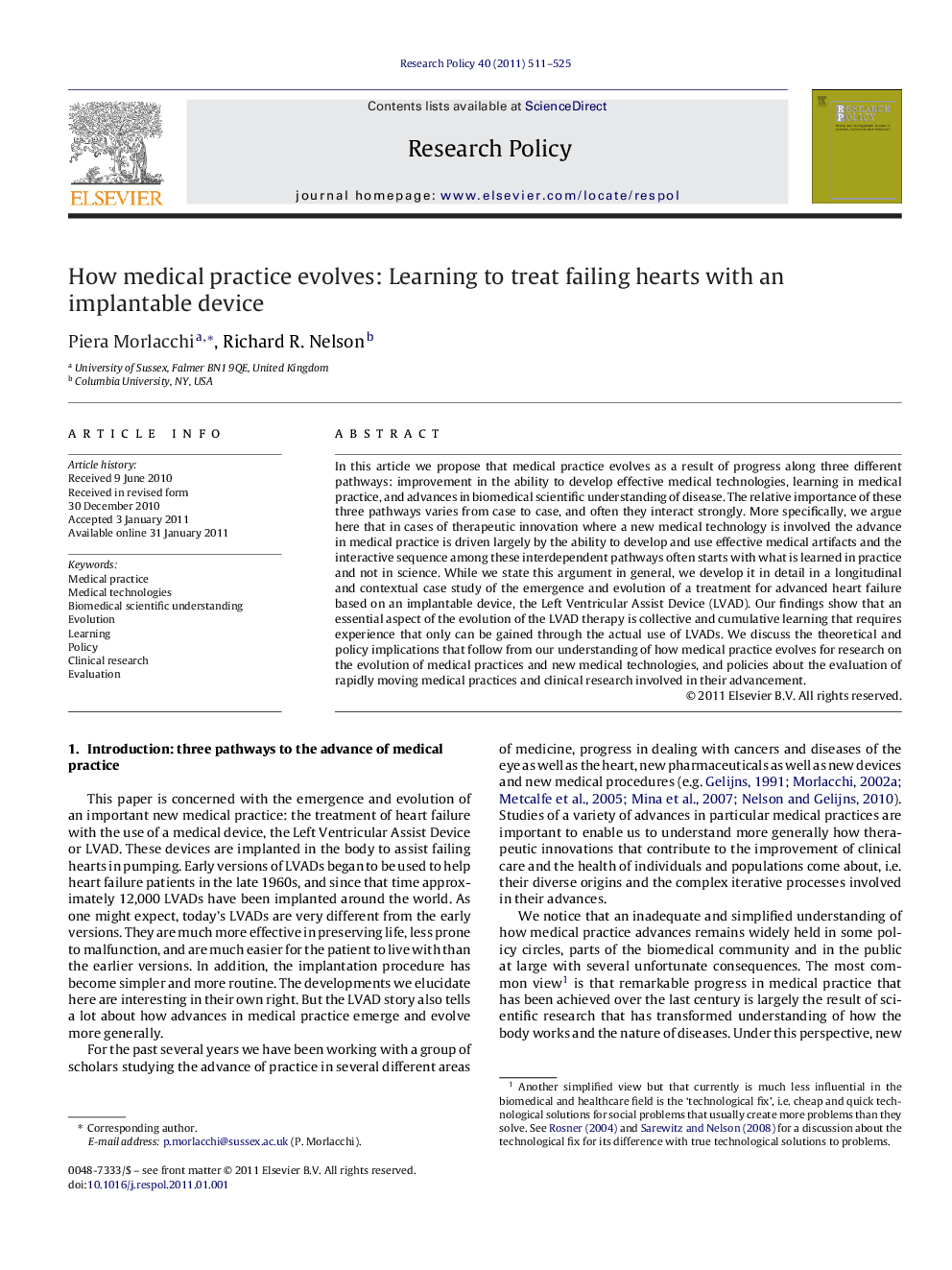| Article ID | Journal | Published Year | Pages | File Type |
|---|---|---|---|---|
| 984105 | Research Policy | 2011 | 15 Pages |
In this article we propose that medical practice evolves as a result of progress along three different pathways: improvement in the ability to develop effective medical technologies, learning in medical practice, and advances in biomedical scientific understanding of disease. The relative importance of these three pathways varies from case to case, and often they interact strongly. More specifically, we argue here that in cases of therapeutic innovation where a new medical technology is involved the advance in medical practice is driven largely by the ability to develop and use effective medical artifacts and the interactive sequence among these interdependent pathways often starts with what is learned in practice and not in science. While we state this argument in general, we develop it in detail in a longitudinal and contextual case study of the emergence and evolution of a treatment for advanced heart failure based on an implantable device, the Left Ventricular Assist Device (LVAD). Our findings show that an essential aspect of the evolution of the LVAD therapy is collective and cumulative learning that requires experience that only can be gained through the actual use of LVADs. We discuss the theoretical and policy implications that follow from our understanding of how medical practice evolves for research on the evolution of medical practices and new medical technologies, and policies about the evaluation of rapidly moving medical practices and clinical research involved in their advancement.
Research highlights▶ We propose that medical practice evolves as a result of progress along three different pathways: improvement in the ability to develop effective medical technologies, learning in medical practice, and advances in biomedical scientific understanding of disease. The relative importance of these three pathways varies from case to case, and often they interact strongly. ▶ More specifically, we argue that in cases of therapeutic innovation where a new medical technology is involved the advance in medical practice is driven largely by the ability to develop and use effective medical artifacts and the interactive sequence among these interdependent pathways often starts with what is learned in practice and not in science. ▶ While we state this argument in general, we develop it in detail in a longitudinal and contextual case study of the emergence and evolution of a treatment for advanced heart failure based on an implantable device, the Left Ventricular Assist Device (LVAD). ▶ Our findings show that an essential aspect of the evolution of the LVAD therapy is collective and cumulative learning that requires experience that only can be gained through the actual use of LVADs. Also, that medical practices like the LVAD have a complex and dynamic nature. ▶ These findings have theoretical and policy implications for the evaluation of rapidly moving medical practices and clinical research involved in their advancement that we discuss in this paper.
